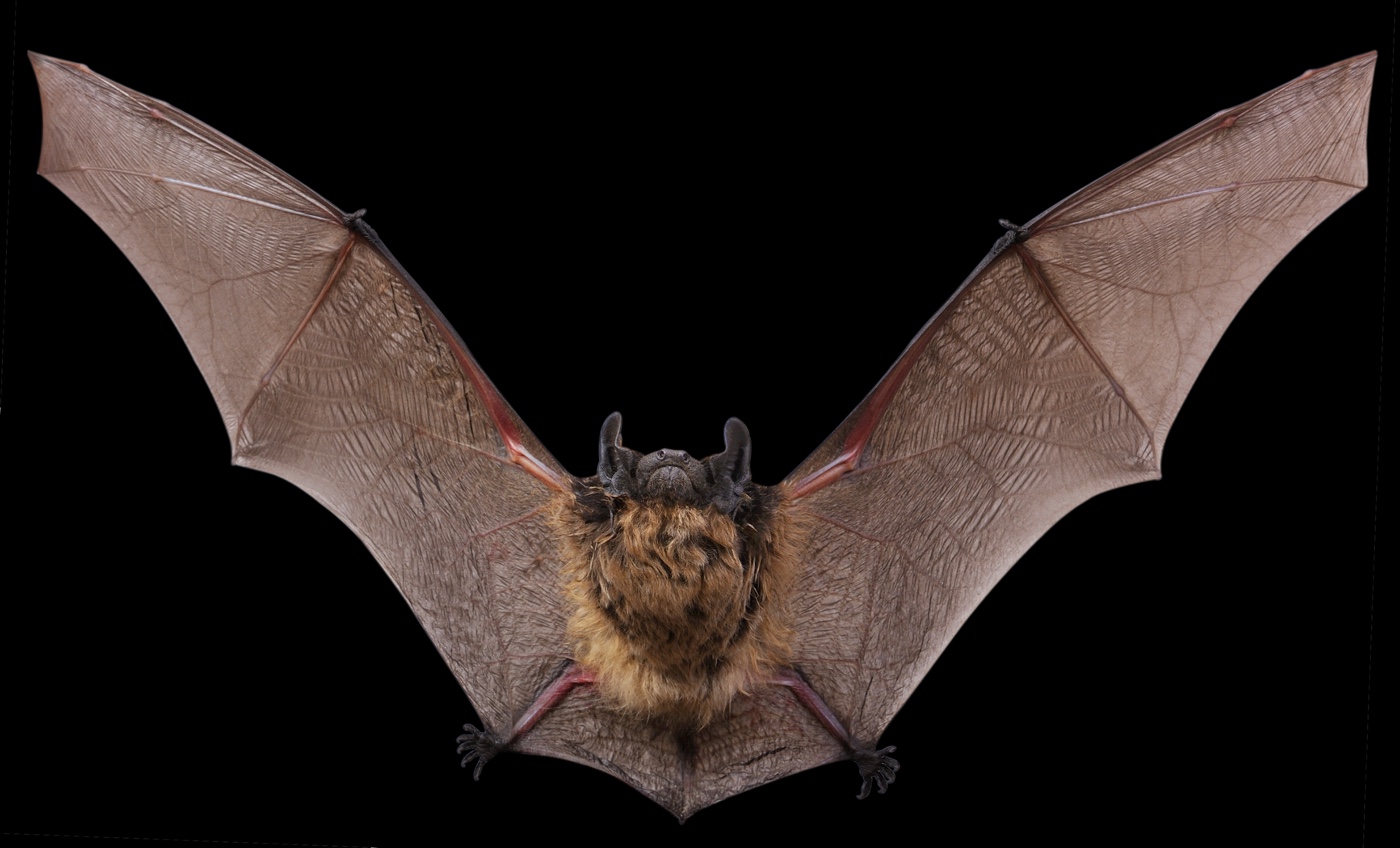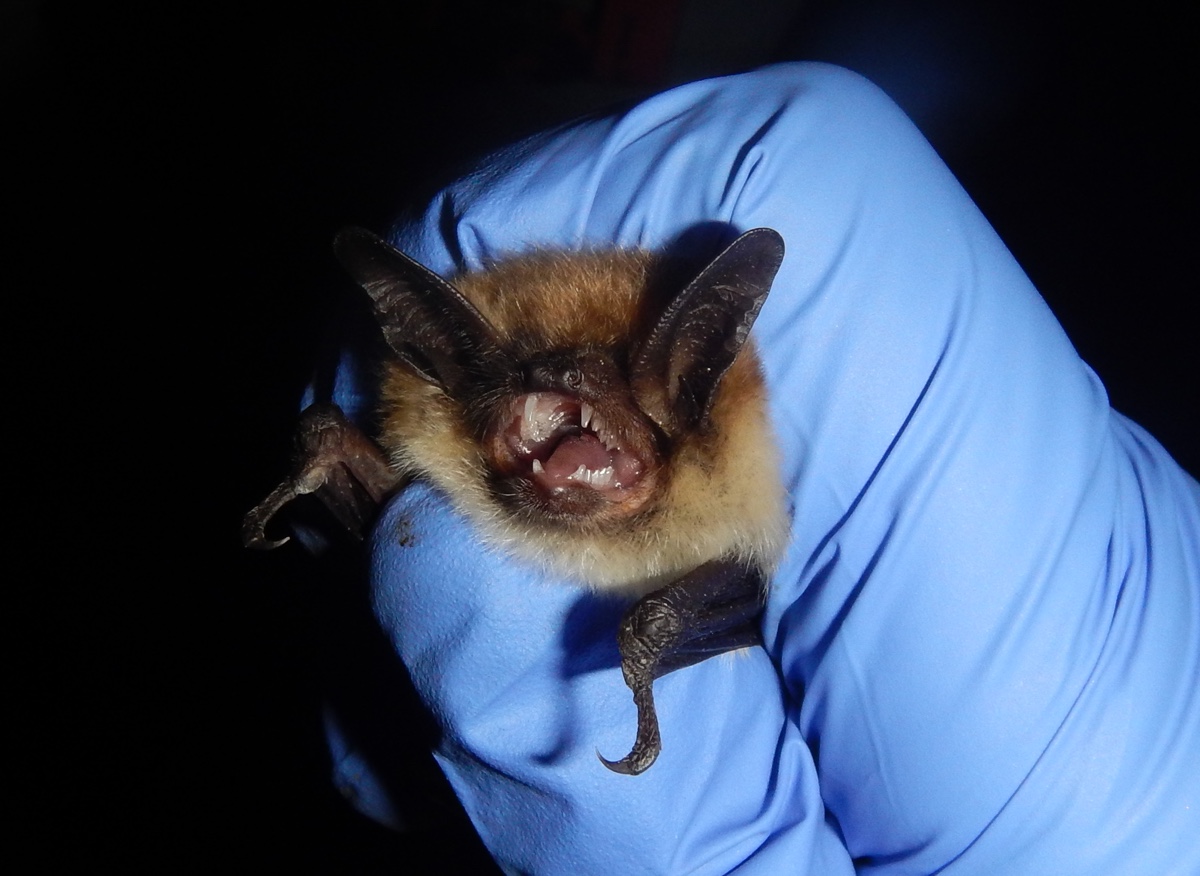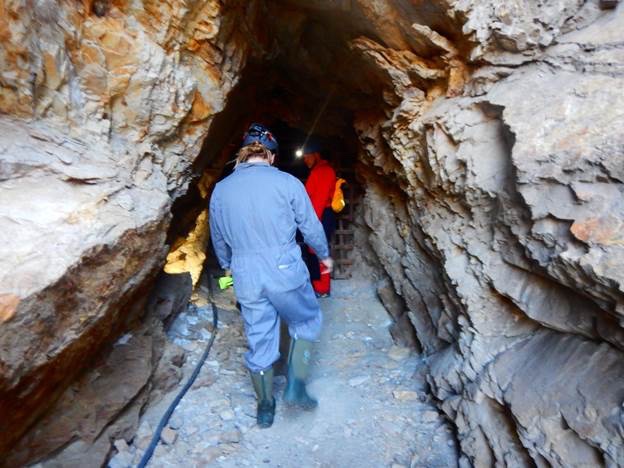
Why Bats Are So Good at Gulping Down (Halloween) Prey

Catherine Haase is a postdoctoral researcher at Montana State University, working with WCS (Wildlife Conservation Society). Haase contributed this article to Live Science's Expert Voices: Op-Ed & Insights.
Imagine eating all of the candy you acquire on Halloween each year in a single night. If you're a bat and winter's approaching, this challenge is no problem: Bats need to consume an enormous number of calories to survive the upcoming winter months without food. Many bat species spend the summer and fall gorging themselves on insect prey to stock up their fat stores for the long winter.
A single bat can consume up to 30 percent of its body weight in a single day. That's like eating more than 36 lbs. (16 kilograms) of Halloween candy. It would be unthinkable for us, but for bats, the ability to stock up fat stores before winter is a matter of life or death. If unable to gain enough weight (especially for an unusually long winter), they face starvation and mortality.
Luckily, many bat species go into hibernation during the winter to reduce energy requirements and hold onto all that winter weight. During hibernation, bats enter a behavioral state called torpor by reducing their metabolism and dropping their body temperatures by as much as 40 degrees Fahrenheit (22 degrees Celsius). By keeping their body temperatures near the temperature of their place of hibernation, or hibernaculum, the heat that is lost is minimal, allowing the bats to burn very little fat. [Flying Mammals: Gallery of Spooky Bats]

This works because of simple physics: Heat flows from a warm body to a cold body. For example, if your hands are cold and you pick up a hot cup of coffee, heat moving from the hot coffee cup to your hands will warm them. Similarly, a cool bat whose body temperature is close to air temperature will lose a lot less heat, and burn less fat, than one whose body temperature is warmer than the surrounding air.
What's less well known is that bats don't remain in torpor for the entire hibernation period. Instead, they periodically return their body temperatures back to normal in what is called an arousal. Why bats arouse is not completely understood, but scientists think it's because they need to get rid of body wastes accumulated over torpor and/or drink to replenish water that is lost through evaporation.
These arousals are very energetically costly. Though bats only spend about 5 percent of the entire winter at normal body temperatures during these arousals, they can burn as much as 95 percent of their body fat during this time.
Sign up for the Live Science daily newsletter now
Get the world’s most fascinating discoveries delivered straight to your inbox.

Unfortunately, a fungus and the energy costs of these torpor-arousal cycles have led many bat species of North America to face severe population declines. A deadly disease known as white-nose syndrome (WNS) is altering their hibernation behavior by increasing the number of arousals – causing bats to burn through their fat stores at rates quicker than normal and leading to starvation.
White Nose Syndrome is caused by a fungus that loves to grow in cold and humid environments, such as bat caves. Scientists first found the fungusin a New York cave in 2006. It has since caused the deaths of some 5.7 million bats across the eastern United States and Canada. As consumers of insects, bats play a critical role in natural ecosystems – one that saves the agriculture industry billions of dollars in pest control each year.
Scientists all over the country have been working to better understand how WNS changes hibernation behavior. I have been fortunate to join an interdisciplinary team of field biologists, bat physiologists, disease ecologists and ecological modelers on a four-year research project funded by the Strategic Environmental Research and Development Program of the Department of Defense.
Our main goal is to predict which species will be highly impacted and are vulnerable to large-spread population declines as WNS spreads farther west. Currently, two other bat biologists and I are traveling across the western United States, from Texas to Montana, with a mobile laboratory to collect baseline data from multiple bat species. [In Photos: Rare Conjoined Bats]

At each site, we use fine mesh netting to catch bats as they swarm around hibernaculum entrances around sunset. After identifying the species, we bring the bats to our mobile laboratory where we measure their body mass, body fat, wing condition and metabolic rate. These data help us understand the different hibernation strategies among bat species so that we can better predict which species should be the focus of conservation efforts to combat WNS.
If bats are able to chow down on enough insects and gain enough weight, then they may be able to combat the excess energy costs of WNS. So, as you trick or treat this Halloween and brush up against things that go bump in the night, take a moment to appreciate our bat friends and be glad you don't need to eat 36 lbs. of chocolates and candy corn to make it to next spring.
Follow all of the Expert Voices issues and debates — and become part of the discussion — on Facebook, Twitter and Google+. The views expressed are those of the author and do not necessarily reflect the views of the publisher. This version of the article was originally published on Live Science.









